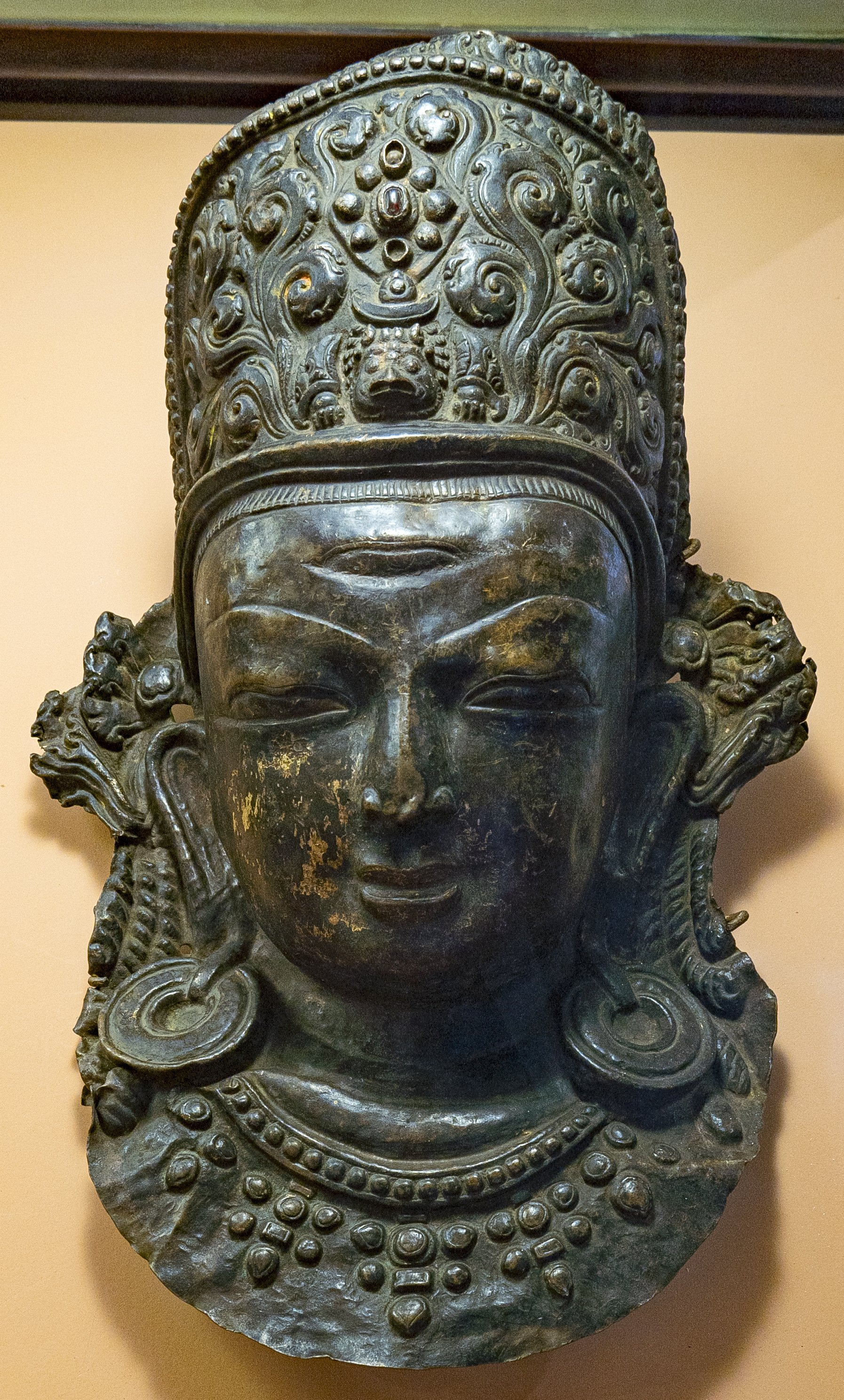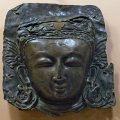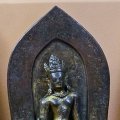Patan Museum (Nepal): photo 183
Photo 183 of 212 in Gallery: Patan Museum (Nepal)

Image title: Indra (Nepal, 15th century)
Description of the photo
This Copper sculpture shows an image of Indra (Ancient Vedic King of the Gods), from the 15th century origination from Nepal.—Materials used: Copper repoussé, semi-precious stones.
Description: Indra is frequently represented in the form of metal mask-like images such as these three repoussé images. All exhibit Indra’s emblematic horizontal third eye and two of them wear the god’s characteristic single-crested crown. The smallest image has splendid earrings in the form of a sea monster (makara), a popular motif in Nepalese art.
Note: These images depict Indra, king of the gods, intrepid warrior, lord of the atmosphere, and in contemporary Nepal, one of the principal rainmakers. Three images are superb examples of a Nepalese metal-craft technique called “repoussé,” a French word meaning “pushed back.” They were made by hammering sheet copper into relief. This technique is illustrated in Gallery G devoted to metal technology.
Gallery information:
The Patan Museum is located on the Durbar square of Patan (Lalitpur/Lalitapura, Kathmandu, Nepal) which is associated Keshav Narayan Chowk (Keshavnarayan)—a form of Lord Vishnu. Being listed as a World Heritage Site, the whole of Durbar square is filled with exquisite temples, sculptures and other ancient structures, of which the ancient history history can be traced to the Malla Kings of Lalitpur. It is an important site for both Buddhism and Hinduism.
Photo details:
Date: 2019-12-02
Camera: SONY ILCE-6400
Exposure: 1/15
Aperture: f/5
ISO: 100
Focal length: 18mm
High resolution:
Download file
Size: 3.00 MB
Resolution: 1794 x 2976
© Photograph by Gabe Hiemstra.
License: CC BY-NC-ND 4.0

